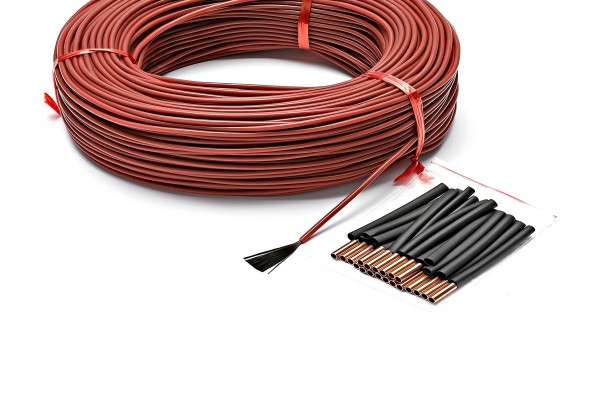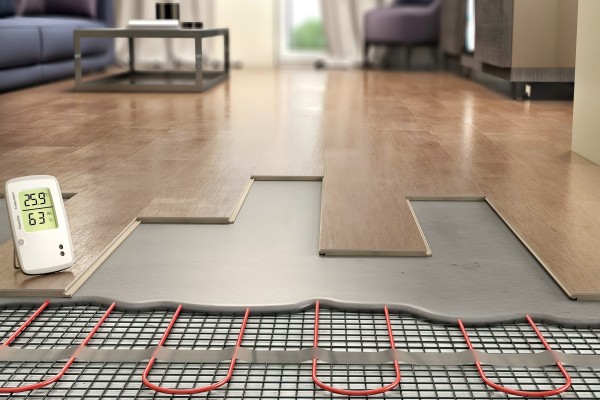Technological advancements have recently introduced materials with exceptional properties that revolutionize various industries. One such material is carbon fiber heating wire. Known for its high efficiency, durability, and adaptability, this heating solution has garnered significant attention in the energy, construction, and consumer goods sectors. But what exactly is carbon fiber heating wire, and what are its main applications? Let’s delve deeper into this cutting-edge technology.
What is Carbon Fiber Heating Wire?
Definition and Composition
Carbon fiber heating wire is a specialized type of heating element made from carbon fibers. These fibers, derived from organic polymers like polyacrylonitrile (PAN), undergo high-temperature treatments to achieve their carbon-rich structure. They convert electrical energy into heat with remarkable efficiency when used as a heating wire.

Unlike traditional metal-based heating elements, carbon fiber heating wires are flexible, lightweight, and corrosion-resistant. Their unique molecular structure allows them to produce uniform heat while maintaining excellent mechanical properties.
How it Works
Carbon fiber heating wires function on the principle of electrical resistance. When an electric current passes through the wire, the inherent resistance of the carbon fibers generates heat. Key features include:
- Rapid Heating: Carbon fibers heat up quickly due to their high thermal conductivity.
- Even Heat Distribution: The uniform structure of carbon fibers ensures consistent heating across the wire’s length.
- Energy Efficiency: Minimal energy loss during heat conversion makes it a cost-effective option.
Key Features of Carbon Fiber Heating Wire
- Durability
- Carbon fiber heating wires can withstand extreme temperatures and repeated use without degradation.
- Flexibility
- Their lightweight and flexible nature makes them suitable for a wide range of applications, including curved and irregular surfaces.
- Corrosion Resistance
- Unlike metal wires, they are immune to rust and oxidation, extending their lifespan.
- High Energy Efficiency
- They consume less energy compared to traditional heating elements, contributing to sustainability efforts.
- Eco-Friendliness
- Carbon fibers are non-toxic and do not emit harmful substances during operation.
Main Applications of Carbon Fiber Heating Wire
Carbon fiber heating wire has found applications across various industries due to its versatility. Below are some of its primary uses:
1. Underfloor Heating Systems
Carbon fiber heating wires are widely used in radiant floor heating systems. Their ability to distribute heat evenly ensures a comfortable indoor environment. Advantages include:

- Easy installation under tiles or wood flooring.
- Energy-efficient heating for residential and commercial spaces.
- Enhanced comfort without bulky radiators.
2. Automotive Industry
In the automotive sector, carbon fiber heating wires are employed in:

- Seat Heaters: Providing warmth during cold weather.
- Defogging Systems: Integrated into windshields and mirrors to prevent fogging.
- Battery Heating: Maintaining optimal temperatures for electric vehicle batteries.
3. Medical Devices
The healthcare industry leverages carbon fiber heating wires in:
- Rehabilitation Equipment: Used in therapeutic heat treatments for muscle recovery.
- Heating Pads and Blankets: Offering consistent and safe heat for patients.
- Incubators: Maintaining precise temperatures for neonatal care.
4. Industrial Applications
Carbon fiber heating wires play a critical role in industrial settings, including:
- Pipe Heating: Preventing freezing in pipelines during winter.
- Composite Manufacturing: Used in molds to provide uniform heating during the curing process.
- Deicing Systems: Installed in runways and outdoor equipment to prevent ice buildup.
5. Consumer Electronics
Modern gadgets and appliances incorporate carbon fiber heating wires for enhanced performance:

- Clothing and Wearables: Electric jackets and gloves with integrated heating wires for cold climates.
- Small Appliances: Hair straighteners, curling irons, and portable heaters.
6. Agriculture and Animal Husbandry
In agriculture, carbon fiber heating wires are used to:
- Heat Greenhouses: Supporting plant growth during colder months.
- Warm Animal Enclosures: Ensuring livestock stays healthy in winter.
7. Aerospace and Aviation
In the aerospace sector, carbon fiber heating wires are employed in deicing systems and advanced thermal management for spacecraft and aircraft.
Advantages Of Traditional Heating Wires
Carbon fiber heating wires offer numerous advantages compared to conventional heating elements, such as:
- Faster Heat-Up Time: Superior thermal conductivity ensures rapid warming.
- Lightweight Design: Ideal for applications requiring minimal weight addition, such as in vehicles and aircraft.
- Longevity: Resistant to wear and tear, providing a longer operational life.
- Safety: Operates at lower voltages and does not overheat easily, reducing the risk of fire.
Challenges and Limitations
Despite its benefits, carbon fiber heating wire faces some challenges:
- Initial Cost: Higher upfront costs compared to traditional heating elements.
- Specialized Installation: Requires skilled labor for proper integration in certain applications.
- Availability: Limited availability in some regions due to production complexities.
Future Trends and Innovations
The future of carbon fiber heating wire looks promising, with advancements focusing on:
- Smart Heating Systems: Integration with IoT for remote control and optimization.
- Eco-Friendly Manufacturing: Development of more sustainable production processes.
- Enhanced Efficiency: Nanotechnology research to improve heat conduction.
Carbon fiber heating wire represents a groundbreaking innovation in heating technology. Its unique properties—such as durability, flexibility, and efficiency—have enabled it to become a preferred solution across diverse industries, from construction to healthcare. As the demand for sustainable and efficient heating solutions grows, carbon fiber heating wire is set to play a pivotal role in shaping the future of thermal technology.
Whether for personal comfort, industrial processes, or high-tech applications, carbon fiber heating wire continues to demonstrate its versatility and potential. As research and development progress, its applications will expand further, making it an indispensable component in modern technology.
